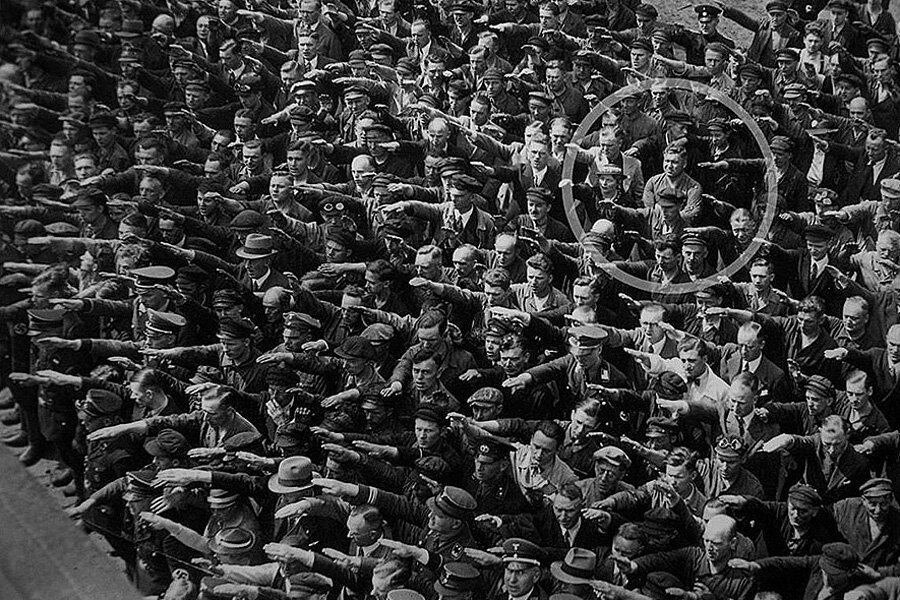What happened to the man who refused to give a Nazi salute
Loading...
Nearly 80 years have passed since a camera captured the moment when a man stood with his hands down among the sea of Germans giving a Nazi salute.
It was in Germany in 1936 and a newly built ship was about to leave the harbor of Hamburg. The photo shows a crowd of people, who are believed to be workers, raising their arms for the infamous gesture, except for a man believed to be August Landmesser who is standing with his arms crossed, squinting.
August Landmesser became a member of the Nazi Party in 1931, according to Fasena, an educational site on the Nazi death camp at Auschwitz. He remained a member until 1935 when at 25 he decided to marry a Jewish woman named Irma Eckler.
Under Nuremberg laws instituted in September 1935, Landmesser was not allowed to marry Ms. Eckler, therefore they stayed unmarried.
Landmesser's first daughter, Ingrid, was born in October 1935, and in 1937, while Eckler was pregnant with their second daughter, Irene, Landmesser attempted to flee Germany to Denmark to find work, but was arrested and sent to jail for “Rassenschande” or “dishonoring the race.”
Eckler is believed to have been detained by the Gestapo in 1938 and sent to a concentration camp. Her last letter to her mother was sent in January 1942.
Precise numbers are still debated, but between 1933 and 1945 German troops killed some six million Jews as well as others, including Poles, Roma and Soviet prisoners of war.
Landmesser was discharged from prison in 1941 and in 1944 was drafted to serve in the war. He was later declared missing in action and believed dead.
Irene Landmesser who after her parents’ arrests was separated from her sister and raised by foster parents, has documented her family history in a book titled "A family torn apart by "Rassenschande": Political persecution in the Third Reich."
In 1991 the German newspaper, Die Zeitth, published the 1936 photo of the non-saluting German, and Irene Landmesser identified the man as her father.
The photo went viral in 2011 after a blog that was launched to help with relief efforts for the Japanese earthquake and tsunami shared it on its Facebook page. Since then, the photo has been shared more than 128,000 times.
No one can tell what was going through that man's mind when he stood among the saluting crowd without raising his arm for salute, or what he did after the photo was taken. But since then, he is known on the Internet as the man who refused to give a Nazi salute.






